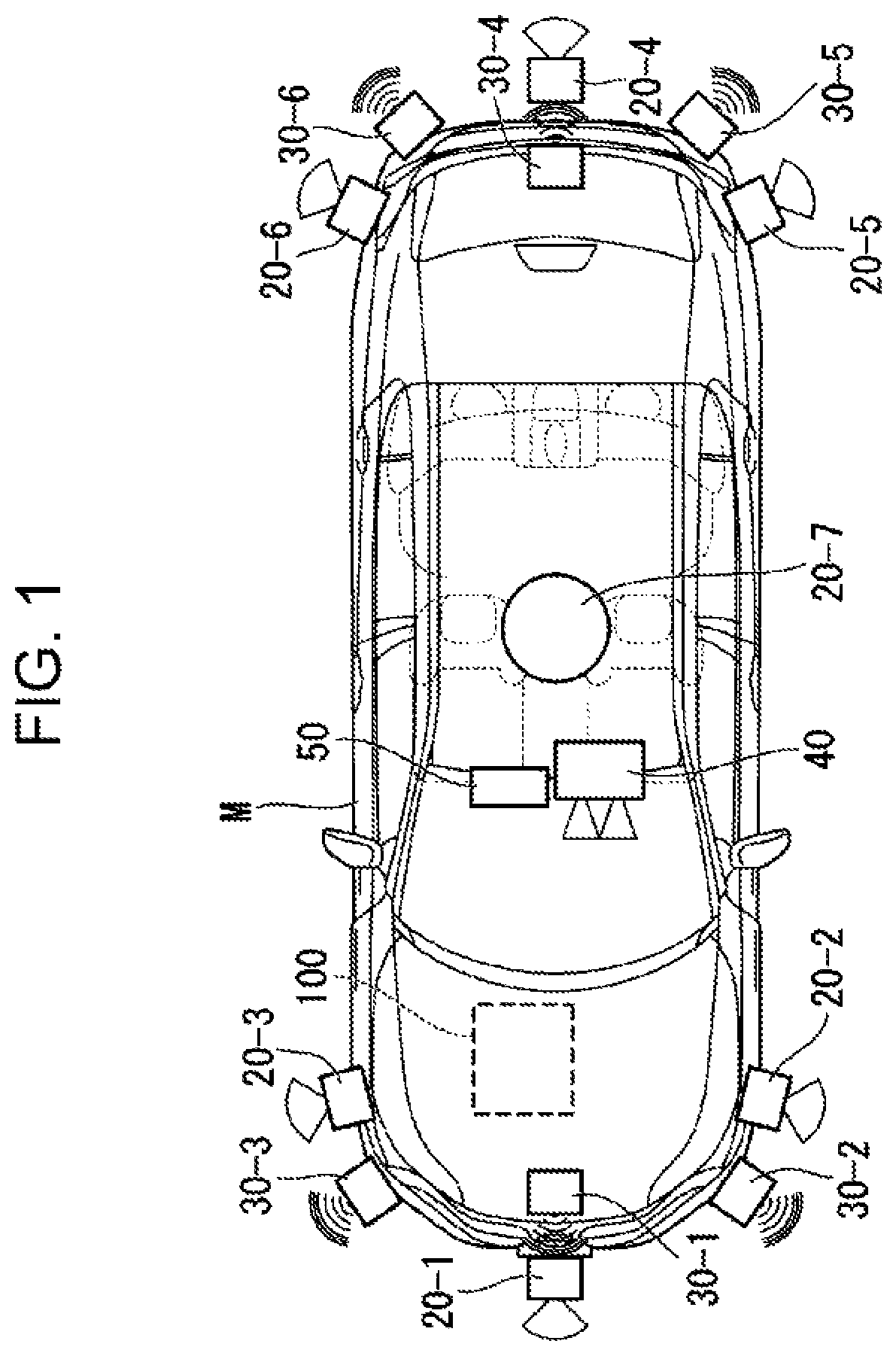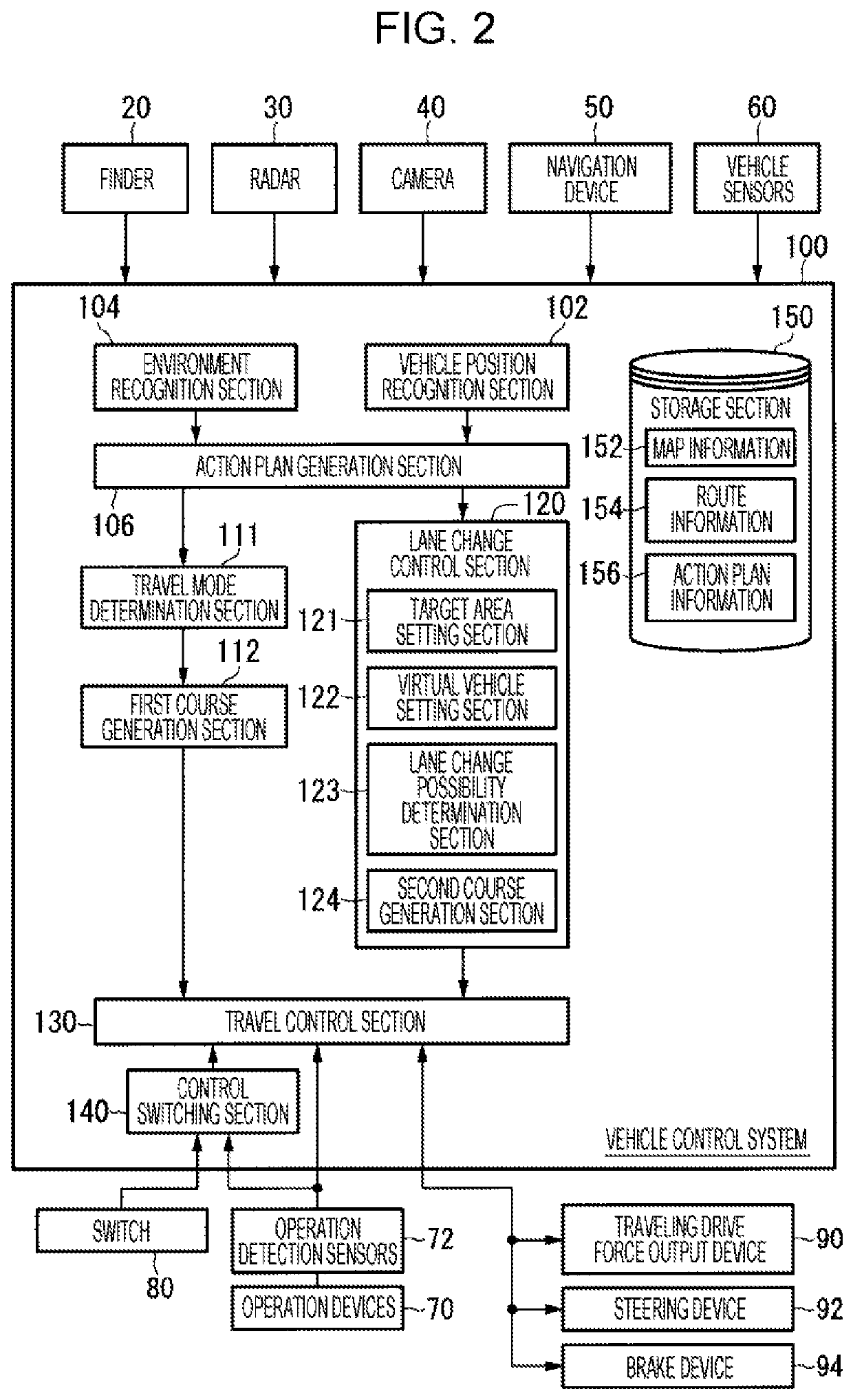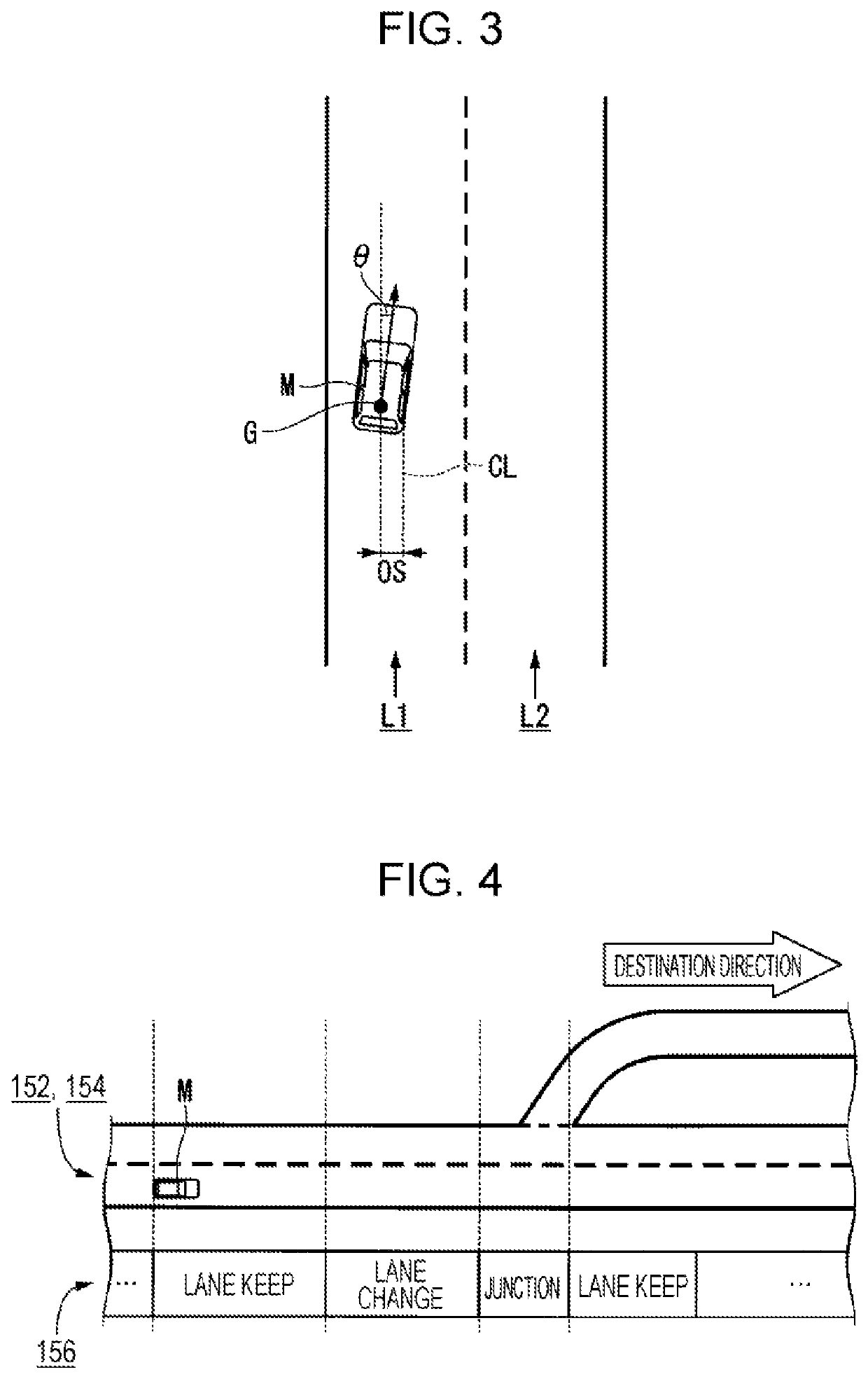Vehicle control system, vehicle control method, and vehicle control program for automatically controlling vehicle based on generated target speed
a technology of vehicle control and target speed, which is applied in the direction of control devices, external condition input parameters, vehicle components, etc., can solve the problem of occupants of vehicles feeling uneas
- Summary
- Abstract
- Description
- Claims
- Application Information
AI Technical Summary
Benefits of technology
Problems solved by technology
Method used
Image
Examples
first embodiment
Vehicle Configuration
[0049]FIG. 1 is a diagram illustrating configuration elements of a vehicle (referred to below as the vehicle M) installed with a vehicle control system 100 according to a first embodiment of the present disclosure. The vehicle installed with the vehicle control system 100 is, for example, a two, three, or four-wheeled, automobile, and encompasses automobiles with a diesel or gasoline internal combustion engine or the like as a motive power source, electric vehicles with an electric motor as a motive power source, and hybrid vehicles including both an electric motor and an internal combustion engine as motive power sources. Such electric vehicles are driven using electric power discharged from a battery such as a secondary battery, a hydrogen fuel cell, a metal fuel cell, or an alcohol fuel cell.
[0050]As illustrated in FIG. 1, the vehicle M is installed with sensors such as finders 20-1 to 20-7, radars 30-1 to 30-6, and a camera 40, a navigation device 50, and th...
second embodiment
[0144]Explanation follows regarding a second embodiment. A vehicle control system 100A of the second embodiment differs from the first embodiment in the point that a course for lane changing is generated based on a state of a vehicle traveling in an adjacent lane into which the vehicle M is attempting to change, and a state of a vehicle traveling in an adjacent lane into which the vehicle M is not attempting to change, out of adjacent lanes adjacent to the current lane. The following explanation focuses on this point of difference. Note that in the following explanation, an adjacent lane on the right side of the current lane is the lane into which the vehicle M is attempting to change (right side adjacent lane), and an adjacent lane on the left side of the current lane is the lane into which the vehicle M is not attempting to change (left side adjacent lane). Moreover, in the second embodiment, a vehicle traveling ahead of the vehicle M in the left side adjacent lane is referred to ...
third embodiment
[0153]Explanation follows regarding a third embodiment. A vehicle control system 100B of the third embodiment differs from the first embodiment and the second embodiment in the point that a virtual vehicle is set when generating a course in which it is necessary for the vehicle M to straddle lanes, or in which there is a high possibility of the vehicle M straddling lanes, such as in a course avoiding an obstacle. The following explanation focuses on this point of difference. “Straddling lanes” refers to part of the vehicle body of the vehicle M overlapping a boundary line between the current lane and an adjacent lane as viewed looking down on the vehicle from above, when the vehicle M is traveling along a generated course avoiding an obstacle.
[0154]FIG. 19 is a functional configuration diagram of the vehicle M, focusing on the vehicle control system 100B according to the third embodiment. The vehicle control system 100B according to the third embodiment further includes a lane keepi...
PUM
 Login to View More
Login to View More Abstract
Description
Claims
Application Information
 Login to View More
Login to View More - R&D
- Intellectual Property
- Life Sciences
- Materials
- Tech Scout
- Unparalleled Data Quality
- Higher Quality Content
- 60% Fewer Hallucinations
Browse by: Latest US Patents, China's latest patents, Technical Efficacy Thesaurus, Application Domain, Technology Topic, Popular Technical Reports.
© 2025 PatSnap. All rights reserved.Legal|Privacy policy|Modern Slavery Act Transparency Statement|Sitemap|About US| Contact US: help@patsnap.com



